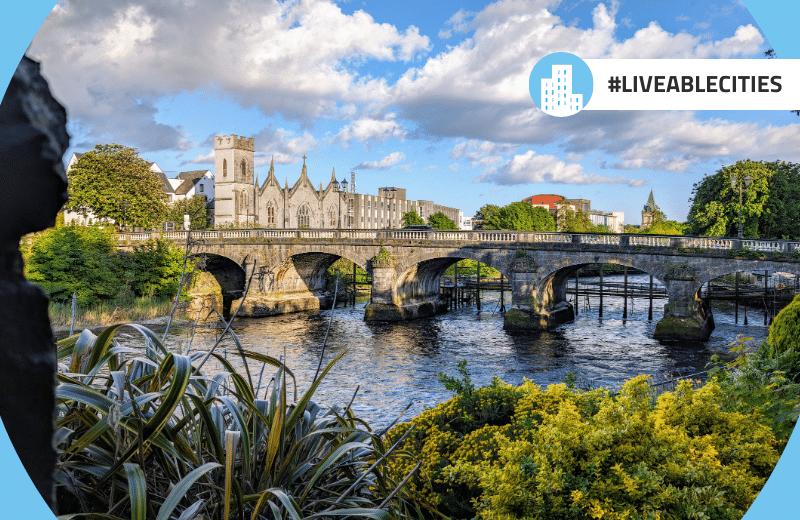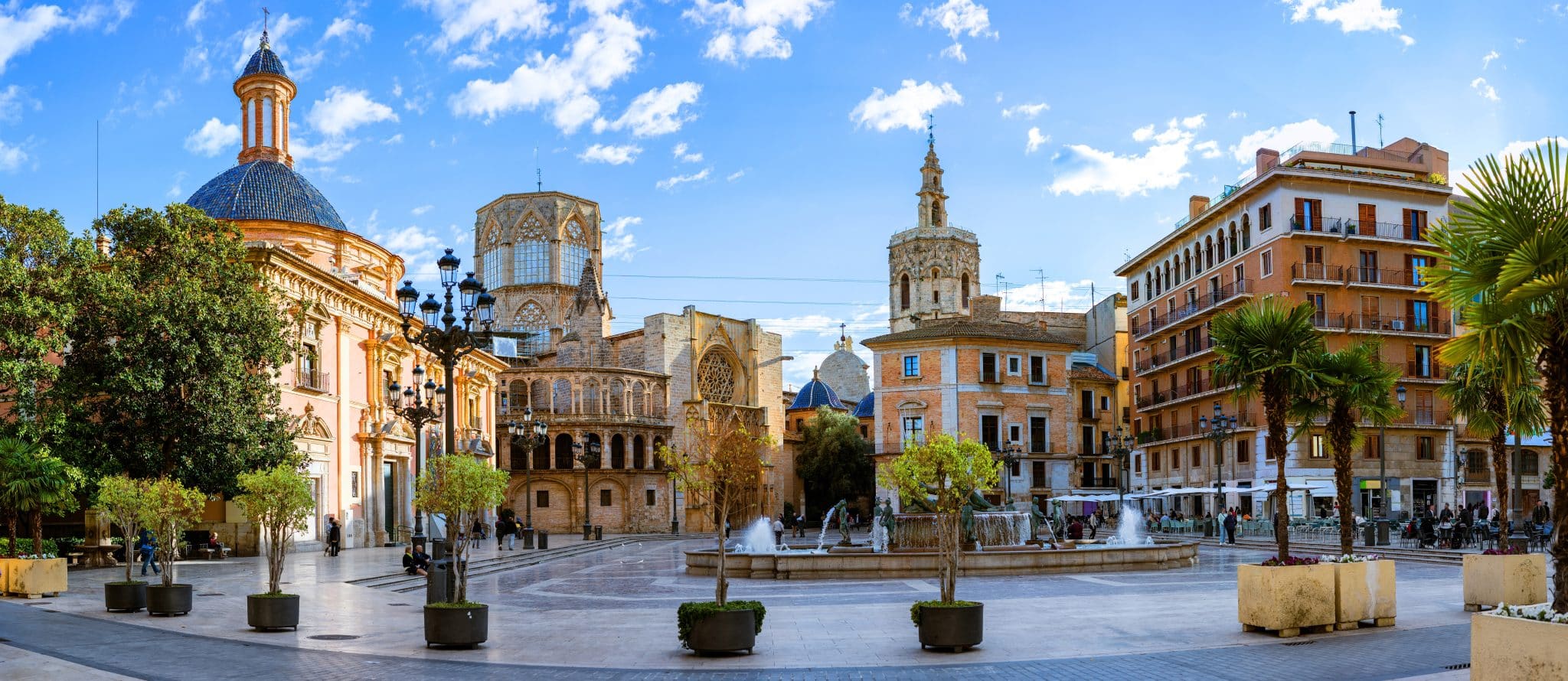How can retrofitting create healthier, more liveable cities?

As cities around the world experience rising temperatures, increasing energy demands, and greater vulnerability to natural disasters, the search for solutions to climate challenges is becoming more urgent than ever. In the European Union, where buildings account for 40 per cent of energy consumption and 36 per cent of greenhouse gas emissions, retrofitting is playing an important role in reducing the impact of climate change and transforming our cities into healthier, more liveable places.
Reducing urban heat and cutting energy consumption
As part of the NetZeroCities programme, led by Climate KIC, participating cities like Galway in Ireland and Krakow in Poland are expanding the definition of retrofitting – moving beyond individual building upgrades to reshaping entire neighbourhoods.
Galway, for example, is retrofitting 250 private homes in the Westside area of the city within the next two years. The strategy is centred on the residents – with a new community hub being built to offer people advice on retrofitting their homes, while providing training opportunities for the local workforce in green construction.
Meanwhile, the city of Krakow is helping to reduce the nation’s reliance on coal while addressing urban heat challenges through retrofitting. The NetZeroCities NEEST Project has connected Krakow with other Polish cities, including Warsaw and Wrocław, to develop a digital retrofitting tool to curb emissions from buildings.
“The way the tool will work is that, for example, a city that wants to thermo-modernise a certain type of building will receive a package of ready-to-use solutions developed as part of the project, with everything already calculated. It is then clear how thick the insulation should be, what heat sources should be installed, whether to choose heat pumps or solar panels on the roof and how much it will cost. The model immediately gives an estimate, so it automatically calculates the budget and how many different materials need to be purchased,” says Grzegorz Grzybczyk, Senior Specialist in the Department of Municipal Economy and Climate, Municipality of Krakow.
Building resilience to natural disasters
Retrofitting can also enhance a city’s resilience to natural disasters. Upgrading older structures is essential in older cities like Istanbul, where the risk of earthquakes is consistently high due it sitting on two tectonic plates. In doing this, the city is integrating more examples of energy-efficient technology into its historic buildings.
“We must act quickly because the threat of an earthquake is a constant concern for us. While the exact timing of the next earthquake is uncertain, the necessity to retrofit our extensive stock of aging buildings is undeniable. Furthermore, this transition presents a unique opportunity to also address climate neutrality. By embracing sustainable practices, we can ensure that our efforts to improve seismic resilience are carried out in an environmentally responsible manner. We want to lead by example, showcase innovative solutions and inspire all stakeholders and other cities,” said Elvin Öksüz Bayazit from Istanbul’s Environmental Protection and Development Department.
As part of the NetZeroCities Pilot City Programme, Istanbul is testing approaches to rapid decarbonisation, including equipping homes with energy-monitoring sensors and educating residents on retrofitting techniques. By addressing the dual challenges of earthquake preparedness and climate neutrality, Istanbul is not only preserving its historic and vibrant character but also demonstrating how cities can turn potential threats into opportunities for sustainable growth and social engagement.
Combining aesthetics with sustainability
Retrofitting is often viewed as purely functional – reducing emissions and improving energy efficiency. However, it also presents an opportunity for the city to enhance the aesthetic and social appeal of its urban spaces. By blending design and sustainability, cities can create environments that are not only sustainable but more beautiful and inclusive for everyone.
The EIT Community New European Bauhaus (NEB), led by Climate KIC, puts this idea at the forefront of its work. Budapest’s Cool Co project has created cooling corners that offer refuge spots during heatwaves. These retrofitted spaces, designed with local communities and NGOs, reduce the impact of Urban Heat Islands while promoting social interaction. They clearly work too – with thermal measurements displaying significantly lower temperatures in these areas compared to the nearby asphalt surfaces.
Similarly, the NEST project in Barcelona – created by EIT Community NEB start-up Entropic – is pushing the boundaries of retrofitting by developing innovative façade panels that improve the acoustic and thermal performance of buildings. The flexible, modular panels can be used to upgrade existing structures or incorporated into new constructions. One of the main and most eye-catching design features provides living spaces for flora and fauna within the urban environment, which can then create a more aesthetically pleasing and emotionally stimulating environment for the local community.
Rethinking climate challenges from a holistic perspective
Retrofitting projects succeed when they take a holistic, multi-stakeholder approach. In Valladolid, Spain, the Urbanew pilot projectbrings together seven Spanish cities to retrofit a range of buildings. This NetZeroCities initiative uses local biomaterials, such as wood, for better insulation. The project aims to develop a multi-city governance model and promote both energy rehabilitation and decarbonisation, with the ultimate goal of creating resilient and sustainable urban environments.
Similarly, in València, the Ciutat Vella project – coordinated by the València Climate and Energy Foundation and funded by Urbanew – is using a city-owned building to test energy-saving techniques. The project, involving architects, researchers, and public sector professionals, further demonstrates how a cross-sector, collaborative approach can drive innovation in response to climate challenges.
Reimagining cities through retrofitting
Retrofitting is an effective way to improve the energy efficiency of our buildings. However, it has the potential to do much more -from providing a place of sanctuary for urban wildlife to strengthening a city’s resilience to natural disasters. When we adopt innovative solutions to climate challenges, we’re able to transform our cities into healthy, resilient and beautiful places to live.
This article is part of Climate KIC’s #LiveableCities Campaign, where we explore the pathways to a climate neutral, just, and more beautiful future. By 2030, our goal is to help transform over 400 cities into thriving, climate-resilient communities. This campaign captures the stories and lessons of ambitious cities in Europe and around the world. We want to show a vision of what’s possible when cities and stakeholders come together to tackle the climate crisis.


